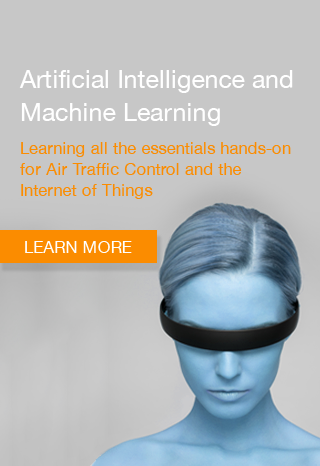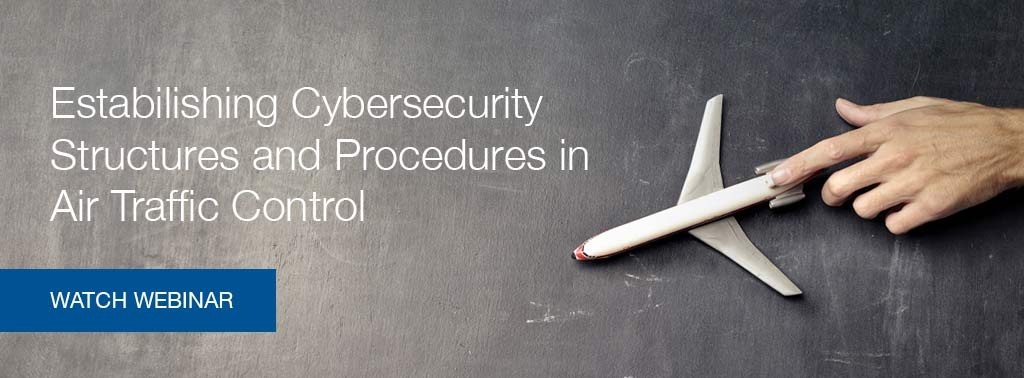This article sheds light on the potential roles of Artificial Intelligence in improving Cybersecurity in times of data-driven and digitalized Air Traffic Management.
Air traffic control marked their worth in the recent research development as various start-ups and organizations are striving towards one of the old industries in our space, aviation. Air traffic includes planes, airbus, aircraft, and commuter liners that travel over navigable air paths with the help of highly advanced computers and navigation devices. Similarly, threats like those followed by road vehicles including cyberattacks, safety measures, verification, ethics and responsiveness, and automation effect on labor faced by air traffic. Nevertheless, most of the global transportation is carried by air and as advanced, artificial intelligence is approaching reality, safety and cybersecurity is a main concern for society.
Air transportation facilitates a range of benefits for the advanced global air traffic domain using multiple optimization tools and artificial intelligence. Management of each plane in flight is a complex, unseen infrastructure known as Air Traffic Management (ATM) system which helps to make the flights safe and secured. As the industry is digitalized with time, ATM is also striving to get new services cost-efficiently, and seamlessly.
ATM Cyber-attacks and Incidents
Cyber-security incidents in the air domain are not new. As one of the first documented accidents happen in Alaska in 2006. The system's integrity is compromised with a viral attack that led to the shutdown of the whole system. In 2013, the center for internet security reported that 75 American airports were attacked by a phishing scam. In 2016, cyberattacks were recorded against the two Vietnam airports and the airlines.
Types of Cybersecurity
Cybersecurity is divided into multiple systems, protocols, and processes rather than a single application. A solid cybersecurity system needs to protect itself from potential services, false information, disruption, and breaches.
The security paradigms include:
- Application security
- Cloud security
- InfoSec
- Infrastructure Security
- End-user security
- Data-loss prevention
AI and cyber-attacks mitigation
The importance of a holistic approach to security recommended that excessive focus on technical controls at the expense of processes and people may reveal and exploit vulnerabilities. Another concern is to avoid plane collisions and smart navigation. Artificial Intelligence shows a potential approach to minimize incidents and threats. Computer-aided programs with the help of satellite data perform better to lean, train, and decide the specific tasks. To improve the system, we need to follow a roadmap that includes bringing policymakers and stakeholders on a single platform. They must set the priorities on this project by exchanging their views based on cyber threats.
The Fly AI Report proposed by the European Aviation AI High-Level Group facilitates a comprehensive approach of current and projected uses of AI in aviation, including an analysis of how AI may encourage air traffic cyber-resilience. Artificial Intelligence and deep learning share their contribution to the improvement of malware detection, message filtering, and network analysis.
To achieve such a solid structure, the industry needs to implement the global information system under a single legislation umbrella. It will connect all the ATM players including all airlines and airports by exchanging information between the users of ATM services and data of service providers. Once the programmers have data, it will be a huge success to implement AI models in terms of better decision-making and planning. There are current applications implemented in the industry that shows improvement in trajectory prediction and security. Artificial intelligence is also helpful to improve safety measures and reduce delays. Moreover, the data analysis and prediction tool anticipate the threatful situation based on the past data history which can mitigate the incident much earlier.
What’s Next
The process and operation of the ATM should be safe enough even if they need regulatory approval from the aviation operators, owners, and the public. Artificial Intelligence has the potential to reduce human-based losses and cyberthreats. Nevertheless, modern technology also modifies some existing errors as well as generates new types of risks. The possible solution for these circumstances will need to be investigated.
When the new technology is evolved with new, deeper, and wider research, it leads towards a variety of comprehensive and systematic risk assessments. One of the important threats is cybersecurity in the case of air operations and safety. The industry wants to secure and adapt the best application from a range of industries in the air environment.
Another challenge faced by the research industry is the lack of secured data as the aviation industry is becoming increasingly data-driven and digitalized. Artificial intelligence provides an optimal solution to secure the data by properly training and optimizing neural network algorithms for the development of such an advanced project.
References and Further Reading
[1] https://www.tsi-mag.com/air-traffic-management-a-cybersecurity-challenge/
[2] https://datascience.aero/artificial-agents-data-air-traffic-operations/






